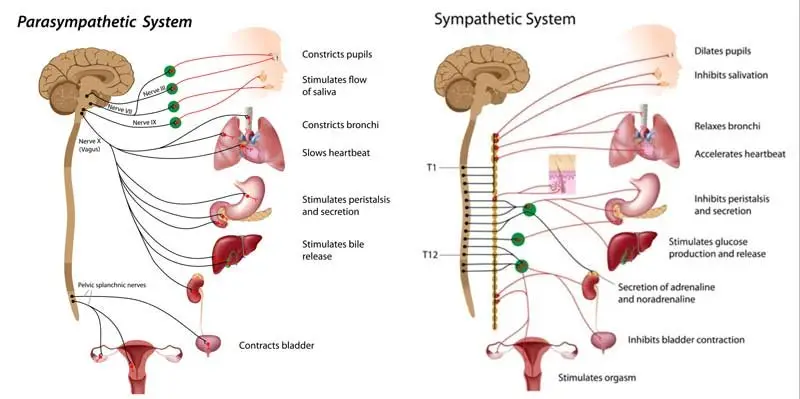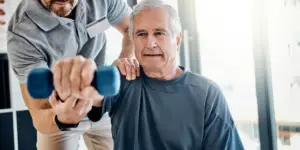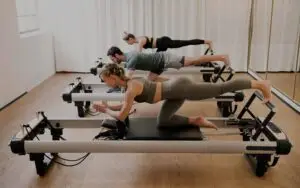Our body is controlled by a nervous system called the Autonomic Nervous System, which regulates (controls) some body functions – heart rate, blood pressure, respiration, digestion, and sexual arousal.
The Autonomic Nervous System can be split up into two systems – the Parasympathetic Nervous System and the Sympathetic Nervous System! Big words! But they mean really simple things!


Parasympathetic Nervous System (PNS) = Rest and Digest
Sympathetic Nervous System (SNS) = Fight and Flight
So the PNS is most activated after a big meal, youre on the couch feeling euphoric and lazy. You just want to go for a nap. Its your most relaxed state
Whereas the SNS is most activated when you’re walking at night and you can hear things – Your sensory system is super heightened and you’re super alert, ready to either fight or run for your dear life.
Lets now bring it back to breathing! The way we breath, engages one system while inhibiting the other. If we breath fast and shallow breaths, we are activating the SNS (fight and flight response) (Marc A. Russo, 2017). And if we breath really slow and deep breaths, we activate the PNS (rest and digest) response (Band, 2018).
As we’ve spoken about previously, headaches and migraines occur due to a neurological irritation; which surfaces as pain behind the eyes, the temples, etc. So by breathing fast and shallow breaths, we are activating the SNS, which then irritates the nervous system even more thus increasing our headaches and migraines. And the opposite is true. By breathing nice slow and deep breaths it really sooths the nervous system; reducing our headaches and migraines.
Referring back to our Headache and Migraine Blogs, headaches and migraines are a mechanical issue which need to be fixed mechanically (alignment and function of our upper cervical joints) and thus correcting breathing will not fix but will more-so help.
If you would like to discuss anything or if you have any questions, please don’t hesitate to contact us at Agape Physio.
Bibliography
Band, R. J. (2018). Breath of Life: The Respiratory Vagal Stimulation Model of Contemplative Activity. Frontiers in Human Neuroscience.
Marc A. Russo, D. M. (2017). The physiological effects of slow breathing in the healthy human. Breathe.
Brown RP, Gerbarg PL. Sudarshan Kriya yogic breathing in the treatment of stress, anxiety, and depression: part I-neurophysiologic model. J Altern Complement Med 2005; 11: 189–201. [PubMed] [Google Scholar]
Eckberg DL. The human respiratory gate. J Physiol (Lond) 2003; 548: 339–352. [PMC free article][PubMed] [Google Scholar]
Bernardi L., Wdowczyk-Szulc J., Valenti C., Castoldi S., Passino C., Spadacini G., et al. . (2000). Effects of controlled breathing, mental activity and mental stress with or without verbalization on heart rate variability. J. Am. Coll. Cardiol. 35, 1462–1469. 10.1016/s0735-1097(00)00595-7 [PubMed] [CrossRef] [Google Scholar]





